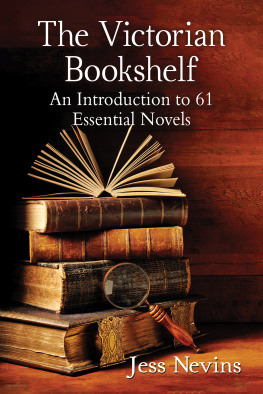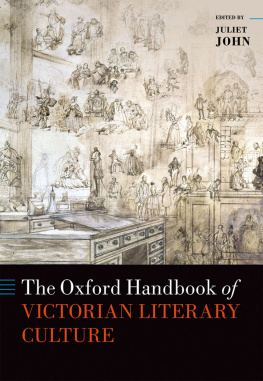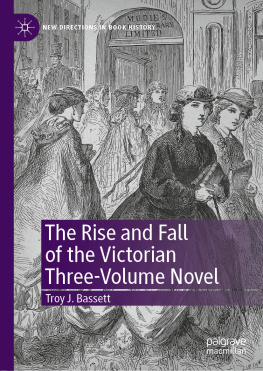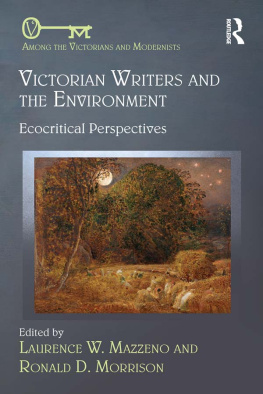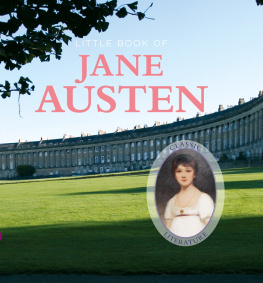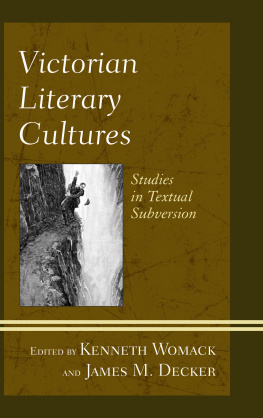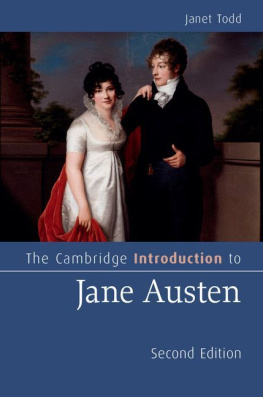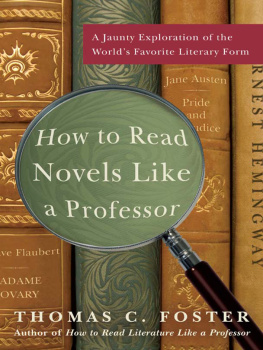
Also by JESS NEVINS
Pulp Magazine Holdings Directory: Library Collections in North America and Europe (McFarland, 2007)
The Victorian Bookshelf
An Introduction to 61 Essential Novels
Jess Nevins

McFarland & Company, Inc., Publishers
Jefferson, North Carolina
ISBN (ebook) 978-1-4766-2433-4
LIBRARY OF CONGRESS CATALOGUING DATA ARE AVAILABLE
BRITISH LIBRARY CATALOGUING DATA ARE AVAILABLE
2016 Jess Nevins. All rights reserved
No part of this book may be reproduced or transmitted in any form or by any means, electronic or mechanical, including photocopying or recording, or by any information storage and retrieval system, without permission in writing from the publisher.
Front cover image of books and magnifying glass 2016 wragg/iStock
McFarland & Company, Inc., Publishers
Box 611, Jefferson, North Carolina 28640
www.mcfarlandpub.com
To my wife Alicia and my son Henry,
both of whose patience with me during the writing
of this book was extensive,
and to John Sutherland,
whose work on the Victorians has long been an inspiration
Introduction
The joys of the Victorian canon of great novels are, sadly, too often lost on readers. The length of those novels can be daunting. The sometimes difficult syntax and vocabulary can be off-putting. Readers often avoid the canon, or stick to reading study guides like Cliffs Notes or SparkNotes or Masterplots rather than reading the novels themselves. This, I think, is a shame, since there is a great deal of pleasure to be had in reading the Victorian canonpleasure, and the benefits of being exposed to the great quality of work within those novels. The Victorian Bookshelf is my attempt to provide these wary readers with an introductory guide to the Victorian canon, explaining what the books are about, why they are a part of the canon, and why they are worth reading. But I hope that experienced readers will also find things of worth in this book as well.
Of course, using the word Essential in the subtitle raises the question about what the canon of Victorian novels is, and how that canon is determined. Rather than wade into the troubled waters of the debate over whether canons are a good thing or notHarold Bloom and his interrogators handle the arguments far more articulately and knowledgeably than Im capable of doingIve fallen back on a more practical and defensible position: that the canon of Victorian novels and authors exists (legitimately or not), and that the canon can best be determined, for my purposes, through the lens of the syllabi of college courses for freshmen. The sixty-one novels in The Victorian Bookshelf were selected by going through a large number of college course syllabi and using the novels selected within them as the novels read for this book. I chose one additional constraint: a limit of two novels per author, so that, within the space provided, I would be able to include as many different canonical novelists as possible.
Naturally, this approach entailed restrictions which pinched on a number of occasions. Repeatedly, I had to leave out novels that in an ideal world would have been included, and that meant I had to make some uncomfortable choices: of Trollopes Barchester novels, which to limit myself to? Of H.G. Wells four great science fiction novels, which two to exclude? And so on. Making these decisions proved to be in some ways more difficult than writing the book itself was. To proponents of works and authors not included in this book, I can only apologize, and blame the space restrictions. I would have loved to include more Meredith, more Gaskell, more Dickens, and anything by Charles Kingsley or the New Woman novelists, but space simply didnt allow for it.
It might reasonably be asked, Why the Victorian canon? Apart from the inherent quality of many of these novelsand some, like George Eliots Middlemarch, are of the very highest qualitythere is the fact that so much of what was written and created in Victorian literature continues to influence us today, whether in literature itself or in the wider culture, whether in particular works or as cultural archetypes. One of the earliest books covered here, Mary Shelleys Frankenstein (1818), has not only provided us with the archetypal modern mad scientist and with a source material for numerous radio shows, television shows, movies, and comics, but also created the genre of science fiction. Earlier works mentioned in passing in the entry on the Gothic date to 1765 (Horace Walpoles The Castle of Otranto) and 1794 (The Mysteries of Udolpho), decades before Victorias reign, but between the two of them they essentially created the Gothic, a cultural genre which flourishes in literature and film even today. The archetypal Victorian authors, from Charles Dickens to George Eliot to William Thackeray to Anthony Trollope, continue to provide models for modern books and movies, and the cultural assumptions and arguments in these novels continue, to a larger or smaller degree, to hold sway and be argued even today. To paraphrase William Faulkner, the Victorian era isnt dead. Its not even past.
As mentioned, some of the novels included in The Victorian Bookshelf appeared before Queen Victoria assumed the throne in 1837, and should probably be described as Georgian or Regency literature rather than as Victorian literature. The astute reader will also quickly notice that several of the novels included here are French or American, which traditionally arent included in considerations of Victorian literature. But the argument can be madeand convincingly so, I thinkthat these works are Victorian in outlook and opinion, so that even if they appeared outside the strict limits of Victorias reign or outside the geographic limits of the British Empire, they still can be considered Victorian. The Victorian cultural and literary outlook did not suddenly begin in 1837 (nor, for that matter, did it suddenly end in 1901, though none of the books included here appeared after Victorias death). Well before 1837 Victorian ideas and events, arguments and tropes, made their appearance, and these ideas and events and arguments and tropes did not limit themselves only to the British Empire during Victorias reign.
The Victorian era can be divided up into three rough time periods: the Early Victorian Period, from 1837 to 1850; the High Victorian Period, from 1850 to the 1870s; and the Late Victorian Period, from 1880 to Victorias death in 1901. The Early Victorian Period embraced change while showing an obsession with maintaining stability and consensus in the face of calls for agitation and reform. The High Victorian period displayed the dominance of the middle class while also emphasizing the idea of the advancement of both individual and government and religion. The Late Victorian Period was a mixture of contradictions, between cultural confidence and self-doubt, between faith in the social and military strength of the Empire and a fin de sicle angst. The three periods are more or less equally represented here by books from those time periods.
The Victorian Bookshelf is written on the assumption that my readers will not have read the novels I describebut I trust those who have read the novels described will find worthwhile commentary within each entry. The entry for each novel not only describes the plot of the novel, but contains critical commentary on the novel as well as personal reactions and reflections on the novelin short, what the novel is about, why its important, and whether or not its worth reading. Each entry is written for an imagined interested reader who will follow up reading an entry with reading the novel itself. I occasionally use words and phrases that may be unfamiliar to this reader; having a dictionary at hand is recommended.
Next page
